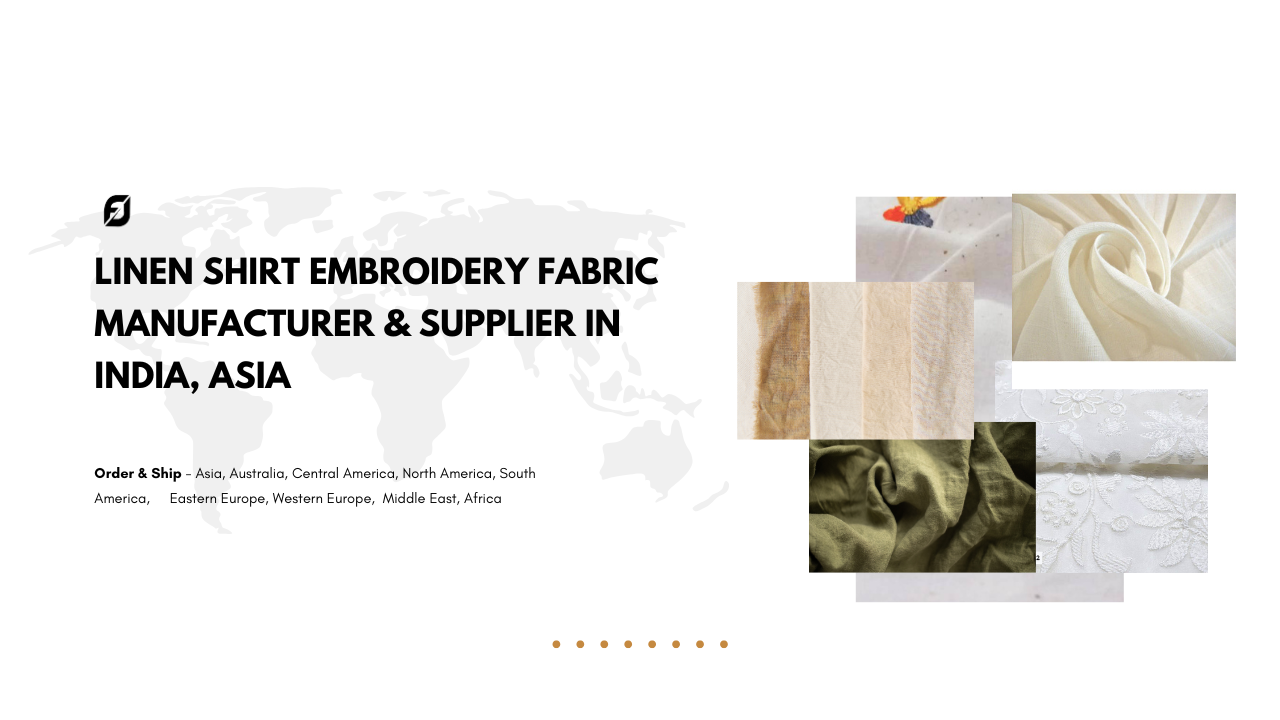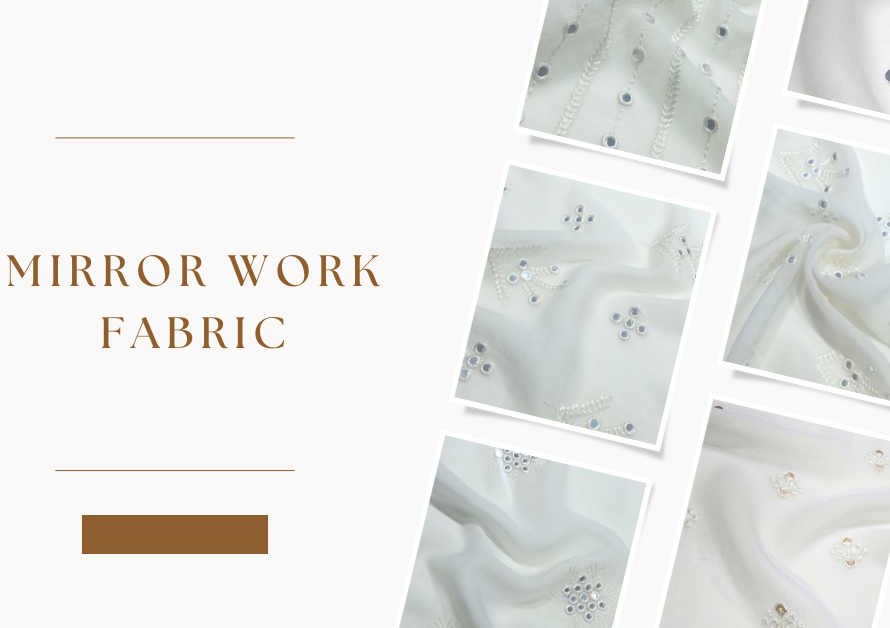In recent years, the textile industry has witnessed a significant shift toward sustainable and eco-friendly fabrics.
The fashion industry is undergoing a revolutionary transformation with the rise of the Fashion Metaverse.
The Global Shift Toward Sustainable Fabrics: India’s Rise in the Textile Industry
As awareness of environmental and health impacts grows, consumers worldwide are increasingly seeking nature-friendly options that are gentle on both the planet and the skin.
This trend is especially pronounced as more people turn away from products made in China, which have been criticized for their poor quality and reliance on harmful chemicals.
Several research reports have highlighted the adverse effects of Chinese-made products, not only on the environment but also on human health. The use of toxic chemicals in manufacturing processes has raised serious concerns, leading to a global backlash against Chinese goods. This rejection is not limited to consumers in other countries—there are reports that even Chinese citizens are becoming wary of their own domestic products, with many showing a preference for goods made in India.
India, with its rich history of textile production and a strong commitment to sustainability, has emerged as a global leader in the production of eco-friendly fabrics. The country’s textile industry has embraced the use of organic materials, natural dyes, and sustainable manufacturing processes that align with global demands for environmentally responsible products. These efforts have been well-received worldwide, particularly after recent developments in Bangladesh, which have further driven international interest toward India’s textile offerings.
One notable player in this movement is Madhav Fashion, a leading name in the Indian textile industry. Madhav Fashion has been at the forefront of producing high-quality, sustainable fabrics that cater to both domestic and international markets. Their commitment to excellence and innovation has made them a preferred choice for consumers seeking premium, eco-friendly textiles.
The global shift away from Chinese products and the growing demand for sustainable alternatives have opened up significant opportunities for India’s textile industry. As consumers become more discerning about the origins and impact of the products they purchase, India’s reputation as a provider of nature-friendly fabrics continues to soar. The world is increasingly looking to India for textile solutions that are both beautiful and kind to the environment—an industry where Madhav Fashion stands out as a key contributor.
the global textile industry is undergoing a transformation, driven by a collective move toward sustainability. As consumers reject chemical-laden products from China, India is stepping up to meet the demand for high-quality, eco-friendly fabrics. With companies like Madhav Fashion leading the way, the future of sustainable textiles looks bright, and India’s influence in this sector is set to grow even further.
_______________________________________________
FAQs on the Global Shift Toward Sustainable Fabrics and India’s Rising Role
1. Why is there a growing global demand for sustainable fabrics?
The global demand for sustainable fabrics is increasing due to heightened environmental and health awareness. Consumers are becoming more conscious of the harmful effects of conventional textile production, particularly the use of toxic chemicals, water pollution, and excessive resource consumption. Sustainable fabrics, made from organic or recycled materials, natural dyes, and eco-friendly processes, offer a safer alternative that minimizes environmental impact and is gentler on the skin. This demand is further driven by the desire to reduce carbon footprints and support ethical manufacturing practices. As a result, more consumers are actively seeking out brands and products that align with their values of sustainability and responsible consumption.
2. Why are consumers rejecting Chinese textile products?
Consumers worldwide are increasingly rejecting Chinese textile products due to concerns about quality and safety. Reports have shown that many Chinese-manufactured goods contain harmful chemicals that can negatively affect both human health and the environment. Additionally, there is growing distrust in the manufacturing processes used in China, with frequent reports of substandard products. The global awareness of these issues has led to a significant shift in consumer preferences, with many opting for products from countries like India, known for their high-quality and nature-friendly fabrics. This trend is particularly strong in the textile industry, where sustainable and eco-friendly options are now in high demand.
3. How has India’s textile industry responded to the demand for sustainable fabrics?
India’s textile industry has responded robustly to the growing demand for sustainable fabrics by embracing eco-friendly materials, natural dyes, and ethical manufacturing practices. Indian manufacturers have increasingly focused on producing fabrics that are organic, biodegradable, and free from harmful chemicals. This shift has been well-received globally, as consumers look for high-quality, environmentally responsible alternatives to Chinese products. Indian companies like Madhav Fashion have been at the forefront of this movement, offering a wide range of sustainable textiles that cater to both local and international markets. Their commitment to innovation and sustainability has positioned India as a leader in the global textile industry.
4. What makes Madhav Fashion a key player in the sustainable fabric industry?
Madhav Fashion has emerged as a key player in the sustainable fabric industry due to its commitment to producing high-quality, eco-friendly textiles. The company utilizes organic materials, natural dyes, and sustainable manufacturing processes that minimize environmental impact while ensuring the highest standards of quality. Madhav Fashion’s focus on innovation and ethical practices has earned it a strong reputation both in India and internationally. By offering customizable and nature-friendly fabrics, Madhav Fashion meets the growing demand for sustainable textiles, making it a preferred choice among consumers who prioritize environmental responsibility and quality in their purchases.
5. What impact has the shift toward sustainable fabrics had on the global textile market?
The shift toward sustainable fabrics has significantly impacted the global textile market by driving innovation and changing consumer preferences. As more people become aware of the environmental and health risks associated with conventional textiles, there is a growing demand for products made from organic, biodegradable, and eco-friendly materials. This has led to a decline in demand for textiles from countries like China, which are often associated with harmful chemicals and substandard quality. Instead, consumers are turning to countries like India, where sustainable textile production is thriving. This shift has opened up new opportunities for Indian manufacturers and has reshaped the global textile landscape.
6. How has the global rejection of Chinese products affected the Indian textile industry?
The global rejection of Chinese products has positively impacted the Indian textile industry by driving demand for Indian-made fabrics and garments. Concerns over the safety and quality of Chinese goods, particularly in the textile sector, have led consumers to seek alternatives that are environmentally friendly and ethically produced. India, with its rich heritage of textile manufacturing and commitment to sustainability, has become a preferred source for high-quality fabrics. Companies like Madhav Fashion have benefited from this trend, seeing increased demand for their nature-friendly textiles both domestically and internationally, which has further strengthened India’s position in the global market.
7. Why are even Chinese consumers turning to Indian textiles?
Even Chinese consumers are turning to Indian textiles due to growing concerns about the quality and safety of domestically produced goods. Reports of harmful chemicals and substandard manufacturing practices in Chinese textile products have led to a loss of trust among local consumers. In contrast, Indian textiles, known for their high quality and eco-friendly attributes, are increasingly appealing to those seeking safer, more sustainable options. Indian companies like Madhav Fashion offer a range of nature-friendly fabrics that cater to this demand, providing Chinese consumers with the quality and safety they are looking for, further boosting India’s textile exports.
8. What role does Madhav Fashion play in promoting sustainable textiles globally?
Madhav Fashion plays a significant role in promoting sustainable textiles globally by offering a wide range of eco-friendly fabrics that meet international standards. The company is committed to using organic materials, natural dyes, and sustainable manufacturing practices, which reduce environmental impact and promote ethical consumption. Madhav Fashion’s innovative approach to textile production has made it a leader in the industry, helping to raise awareness about the importance of sustainability in fashion. By providing high-quality, customizable textiles, Madhav Fashion supports the global shift toward more responsible and environmentally friendly fashion choices.
9. How does the shift towards sustainable fabrics benefit the environment?
The shift towards sustainable fabrics benefits the environment in several ways. Sustainable textiles are typically made from organic or recycled materials, which reduce the need for harmful chemicals and synthetic fibers. These fabrics often require less water and energy to produce, resulting in a smaller carbon footprint. Additionally, sustainable manufacturing processes prioritize waste reduction and the use of natural dyes, which minimizes pollution and supports biodiversity. By choosing sustainable fabrics, consumers contribute to a cleaner, healthier planet and help reduce the environmental impact of the fashion industry. This shift also encourages more responsible production practices globally.
10. What future trends can we expect in the sustainable textile industry?
In the future, the sustainable textile industry is likely to see continued growth and innovation, driven by increasing consumer demand for eco-friendly products. We can expect advancements in sustainable materials, such as the development of new plant-based fibers and biodegradable textiles. Additionally, more companies will likely adopt circular economy principles, focusing on recycling, upcycling, and reducing waste throughout the production process. The trend towards transparency and ethical sourcing will also gain momentum, with consumers demanding more information about the origins and impact of the fabrics they purchase. As leaders like Madhav Fashion continue to innovate, the industry will evolve towards even more sustainable and responsible practices.






